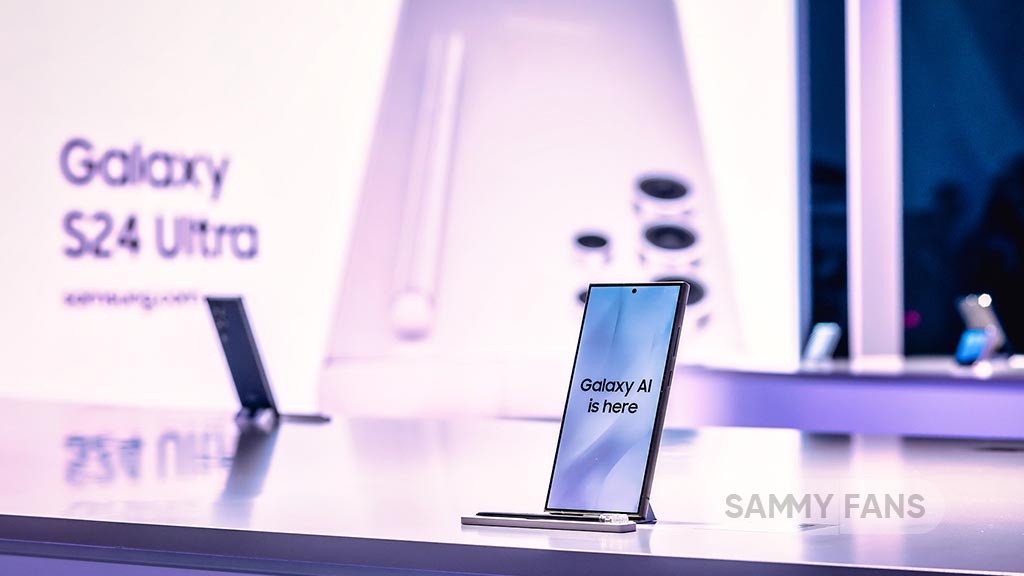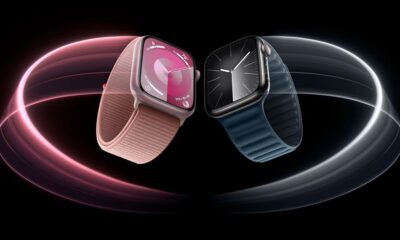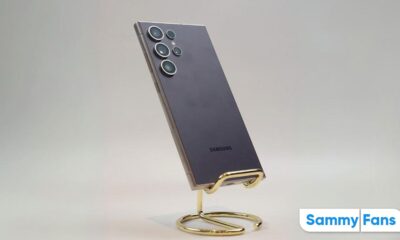News
Apple iPhone 13 launched with 120Hz displays, smaller notch and A15 Bionic

One of the biggest Samsung rivals, Apple launched its latest iPhone 13 series mobile phone lineup at the virtual launch event. Obviously, the new iPhone 13 lineup comes with several improvements over the previous generation such as a smaller notch, better camera and 120Hz display.
However, these improvements are not as significant as last year’s redesign and introduction of 5G, but they are still satisfactory to attract millions of Apple users to upgrade their iPhones to iPhone 13, at the same time, the US carriers are also bringing various discounted prices.
Well, we’re skipping the iPhone 13 mini and iPhone 13 standard variants in our discussion.
iPhone 13 and iPhone 13 Pro Max
Display
Apple’s new iPhone 13 and iPhone 13 Pro Max are equipped with 6.1-inch and 6.7-inch large display respectively along with a new Super Retina XDR with ProMotion display, which enables various refresh rates from 10Hz to 120Hz. Moreover, these models makes 25 percent higher max outdoor brightness at up to 1000 nits.
Well, Apple’s traditional notch still remains a part of its 2021’s iPhone lineup, but this time, the company has slightly reduced and made it slim compared to previous generations. Accordding to Apple, iPhone 13 models’ notch is 20% smaller than the iPhone 12.

Camera
No one can beat Samsung when it comes to smartphone cameras, and the Galaxy S21 Ultra is its yet another example thanks to its dual telephoto sensors. Meanwhile, with its iPhone 13 lineup, Apple introduced some significant upgrades in the camera department such as 1.9 µm pixels larger sensor.
On the other hand, the iPhone 13 Pro and 13 Pro Max also has an f/1.5 aperture wide-angle camera along with sensor-shift optical image stabilization (OIS) for stable videos. Furthermore, the new f/1.8 ultra wide-angle camera that also has night mode function.
- Cinematic Mode
With the Cinematic Mode, the iPhone 13 could make your mobile footage look a lot more like Hollywood films. According to Apple, this feature can mimic the focus capabilities from professional cameras, at the same time, it can automatically focus your video scenes on specific subjects.

A15 Bionic – A lightning-fast chip that leaves the competition behind?
Apple claims the A15 Bionic is much faster than the competition, delivering more performance and better power efficiency, making everything even more fluid in the iPhone 13 lineup.
It uses 5-nanometer technology and has nearly 15 billion transistors to tackle the most demanding tasks, including the latest computational photography features.
A new 6-core CPU with two high-performance cores and four high-efficiency cores is up to 50 percent faster than the competition, the fastest in any smartphone, and handles demanding tasks smoothly and efficiently.
On the other hand, the new 4-core GPU is up to 30 percent faster than the competition and enables more lifelike visuals and lighting effects in graphics-intensive games.

The new 16-core Neural Engine is capable of 15.8 trillion operations per second, enabling even faster machine learning computations for third-party app experiences, as well as features like Live Text in Camera with iOS 15.
Major advancements to the next-generation ISP, paired with computational photography and powerful camera hardware, combine to create the new dual-camera system.
That’s all folks, if you want to read full Apple iPhone 13 specifications, head to Apple Newsroom, then come back to your real world – Galaxy with SammyFans😉.
Apps
Samsung Customization Service just got better with April 2024 update

Samsung is rolling out an April 2024 update for the Customization Service app with version 3.5.01.4. This update brings bug fixes and general enhancements that promise to elevate the overall user experience.
The fresh update of the Samsung Customization service improves some functions for smoother performance. Also, it fixes some issues that users encountered in previous versions to make the app more reliable. Notably, the update is compatible with Galaxy devices running Android 14 or Android 13.
The Customization Service app is designed for Samsung devices to deliver individual preferences and needs smartly. By analyzing user interactions and data, the service offers personalized content and recommendations, creating a unique and tailored experience for each Samsung device owner.
With the April 2024 update, Samsung aims to provide better performance and user experience to Galaxy users through Customization Service. You can get the latest update through the Galaxy Store or download it directly from the third-party app source link mentioned here.

Stay up-to-date on Samsung Galaxy, One UI & Tech Stuffs by following Sammy Fans on X/Twitter. You can also discover the latest news, polls, reviews, and new features for Samsung & Google Apps, Galaxy Phones, and the One UI/Android operating system.
Do you like this post? Kindly, let us know on X/Twitter: we love hearing your feedback! If you prefer using other social platforms besides X, follow/join us on Google News, Facebook, and Telegram.
News
Samsung will do its best to bolster US semiconductor ecosystem
Samsung announced the expansion of its semiconductor investment in the US. The Biden government is also awarding a subsidy of $6.4 billion to the company so it can accelerate the expansion of its global semiconductor supply chain in the era of AI.
- Experts pointed out Samsung’s production capabilities as a world-leading semiconductor producer and commitment to US investment have led to the third-biggest subsidy deal with Washington.
The Korean tech giant revealed that it’s increasing its investment in its semiconductor plants in Texas to more than $40 billion from $17 billion. Following the CHIPS Act subsidy, Samsung will help to boost the US semiconductor production to 20% by the end of the decade.
Samsung is committed (via KoreaTimes) to doing its best to strengthen the local semiconductor ecosystem in the US, as well as dealing with booming demand for new high-performance AI chips like HBM amid the rise of applications such as GenAI, exemplified by models like ChatGPT.
“We’re not just expanding production facilities, we’re strengthening the local semiconductor ecosystem and positioning the US as a global semiconductor manufacturing destination,” Kyung Kye-hyun, CEO and head of semiconductor business at Samsung Elec, said after the govt’s announcement in Taylor.
Stay up-to-date on Samsung Galaxy, One UI & Tech Stuffs by following Sammy Fans on X/Twitter. You can also discover the latest news, polls, reviews, and new features for Samsung & Google Apps, Galaxy Phones, and the One UI/Android operating system.
Do you like this post? Kindly, let us know on X/Twitter: we love hearing your feedback! If you prefer using other social platforms besides X, follow/join us on Google News, Facebook, and Telegram.
News
USA: Samsung will refund if you dislike Galaxy AI on S24 Ultra [30 days trial]

Try Galaxy AI on Samsung Galaxy S24 Ultra for FREE in the US [30-Day Money-Back Guarantee]
Samsung is allowing US consumers to buy the Galaxy S24 Ultra and other models to try out Galaxy AI. Interestingly, if the user isn’t amazed by the Galaxy AI features even within 30 days of using it, Samsung will refund the full amount.
The company is offering up to $750 instant trade-in credit for Galaxy S24 Ultra buyers. If you buy from Samsung.com, you will also get $75 instant Samsung Credit, which can be used for shopping for protective cases, glass, and accessories.
Buy & Try
Samsung has partnered with select US carriers to avail Buy and Try facility to consumers. You need to buy the phone from the online shop, depending on the carrier, you will be notified about the offer. Purchase on the website and get your product delivered to your doorstep.
Now, you will have 30 days trial period, in which, you can enjoy all the Galaxy AI features on the S24 Ultra. You can also opt for other eligible Galaxy models under the Buy and Try promo. If you like it, then keep it otherwise Samsung will refund the full amount to you!
Try it now: http://smsng.us/GalaxyS24Ultra
Give it a try. Explore #GalaxyAI. Try Galaxy AI, now available on even more Galaxy phones. Buy it now, try it for 30 days, then keep it or get a full refund. Terms and conditions apply. #GalaxyS23 Series #GalaxyS24 Series #GalaxyZFlip5 #GalaxyZFold5
Try it now:… pic.twitter.com/WxvZrabHAc
— Samsung Mobile US (@SamsungMobileUS) April 15, 2024
Stay up-to-date on Samsung Galaxy, One UI & Tech Stuffs by following Sammy Fans on X/Twitter. You can also discover the latest news, polls, reviews, and new features for Samsung & Google Apps, Galaxy Phones, and the One UI/Android operating system.
Do you like this post? Kindly, let us know on X/Twitter: we love hearing your feedback! If you prefer using other social platforms besides X, follow/join us on Google News, Facebook, and Telegram.












